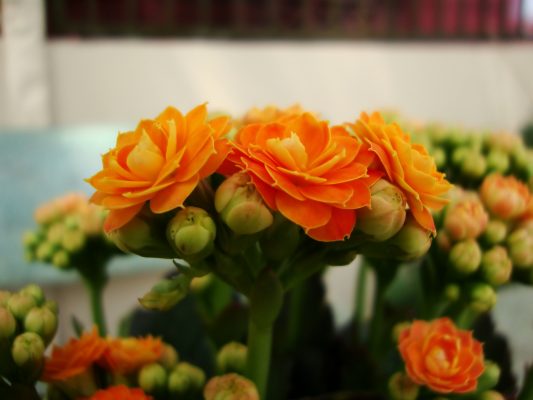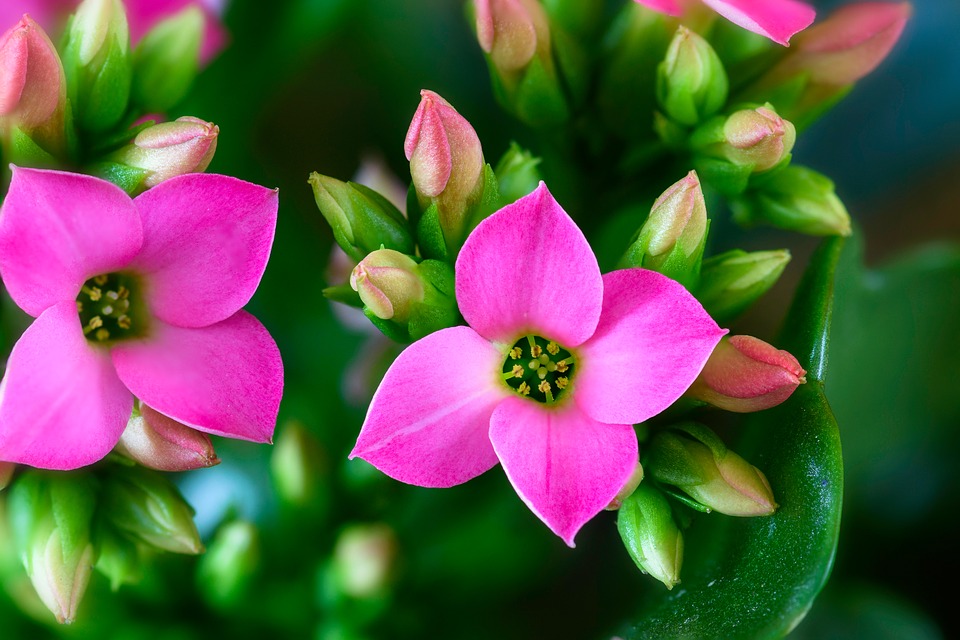Plant Care
Kalanchoe & Calandiva Care
Kalanchoe are a type of succulent that comes in flowering and non-flowering varieties. The flowering varieties bloom in clusters of pink, yellow, orange, white or red star-shaped flowers.
Calandiva is a hybrid of flowering Kalanchoe and blooms in the same colors, but the flowers are rose-like. The care for both plants is the same.
Light – Moderate to bright light for non-blooming varieties. Blooming varieties want lots of bright, indirect light while they are blooming, but need moderate to low light in order to rebloom. Once they’ve formed new flower buds, they can go back into brighter light conditions.
Water – Members of the succulent family, these plants should be allowed to dry out completely before being thoroughly saturated. *Some potting soils may take a while to absorb water after being dry for a long period of time. This is referred to as becoming “hydrophobic” and can be overcome by repeatedly watering the soil and draining excess water, until the soil becomes saturated.*
Soil – Well-draining soil. Espoma Cactus Soil is an excellent choice for Aloe, though all purpose potting soil can be used as well. If you find your soil is staying too wet, add perlite to increase drainage or decrease watering.
Temperature – Ideal temperatures are between 65° and 85°. Don’t expose to temperatures below 50°.
Humidity – Average home humidity levels are preferred.
Fertilization – Fertilize monthly with a balanced fertilizer like Bonide Liquid Plant Food.
Deadheading and Reblooming – Pinch off blooms as they fade to encourage a more blooms. On average, Kalanchoe and Calandiva bloom for several weeks, if not months. Once they have finished blooming, they will require a rest period (approximately 6 weeks) before they will bloom again. To encourage reblooming, you’ll want to reduce the amount of light they receive until buds form.
Size – Kalanchoe and Calandiva average 6 to 18 inches tall and wide.
Repotting – As a member of the succulent family, Kalanchoe and Calandiva are slow growing plants. In general, they don’t require repotting more than every 2 to 3 years. When the time comes to repot, select a container with good drainage and no more then 2 sizes larger than its current container.
Propagation – Easily propagated by leaf cuttings.
Toxicity – Highly toxic to people and pets when ingested.



